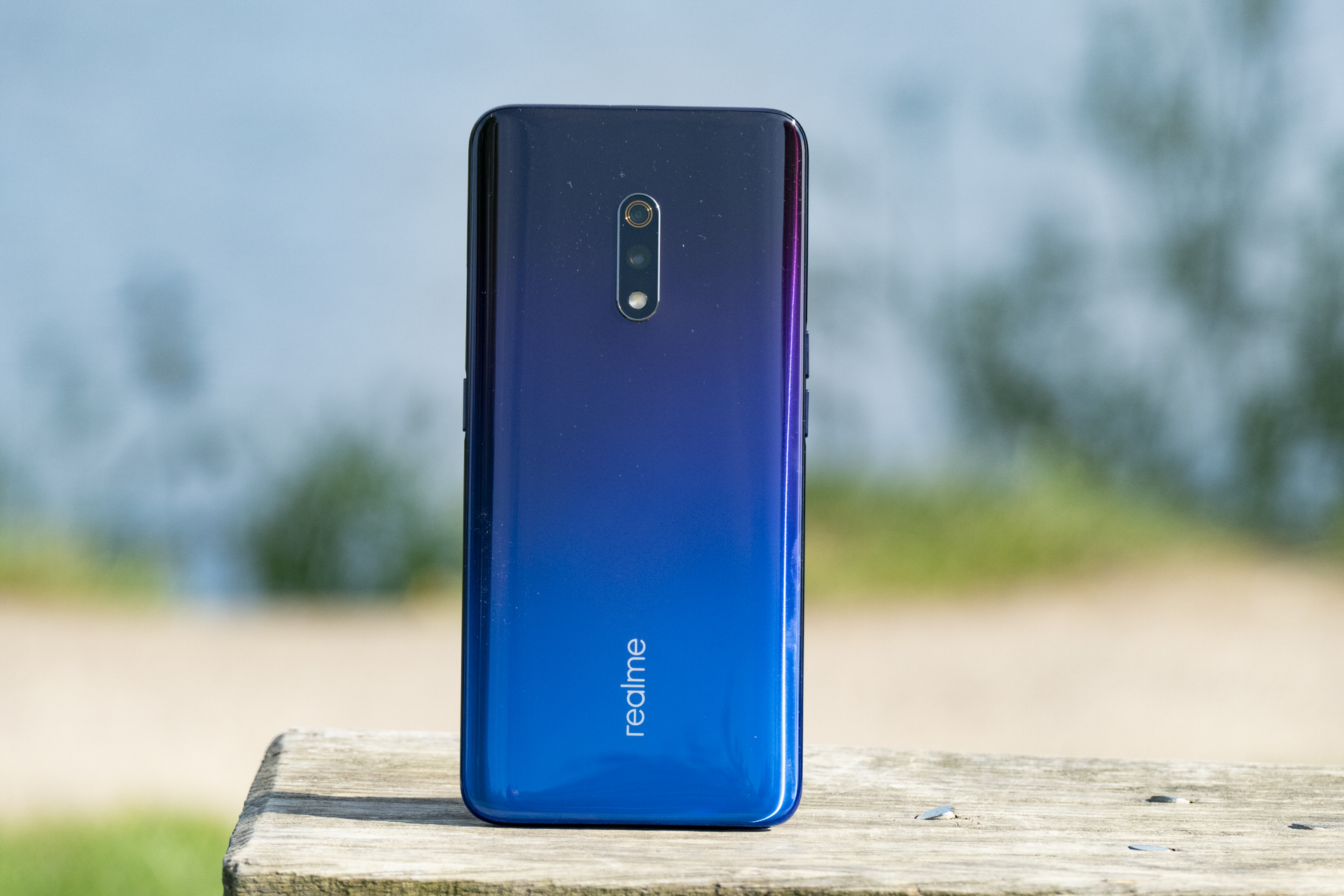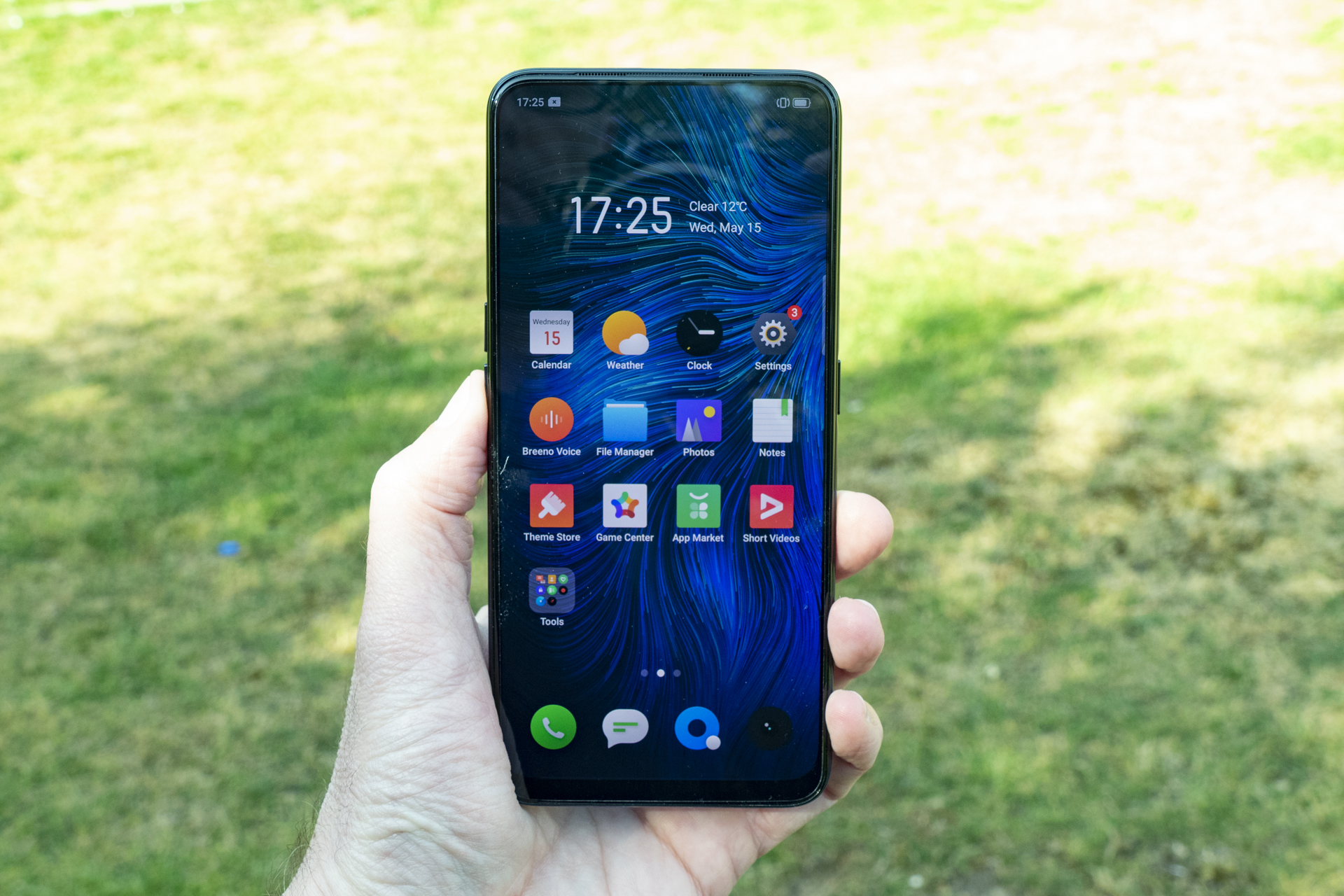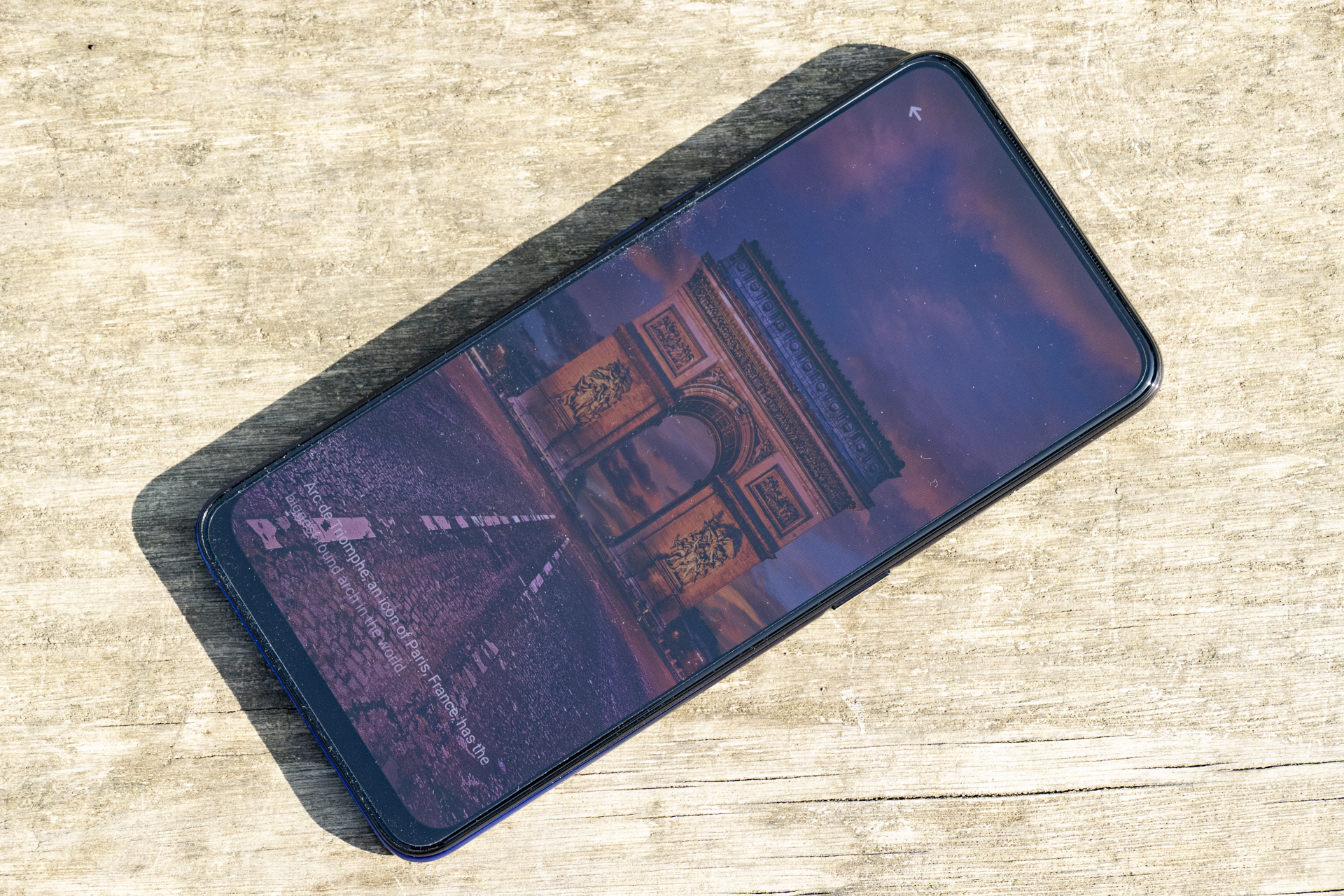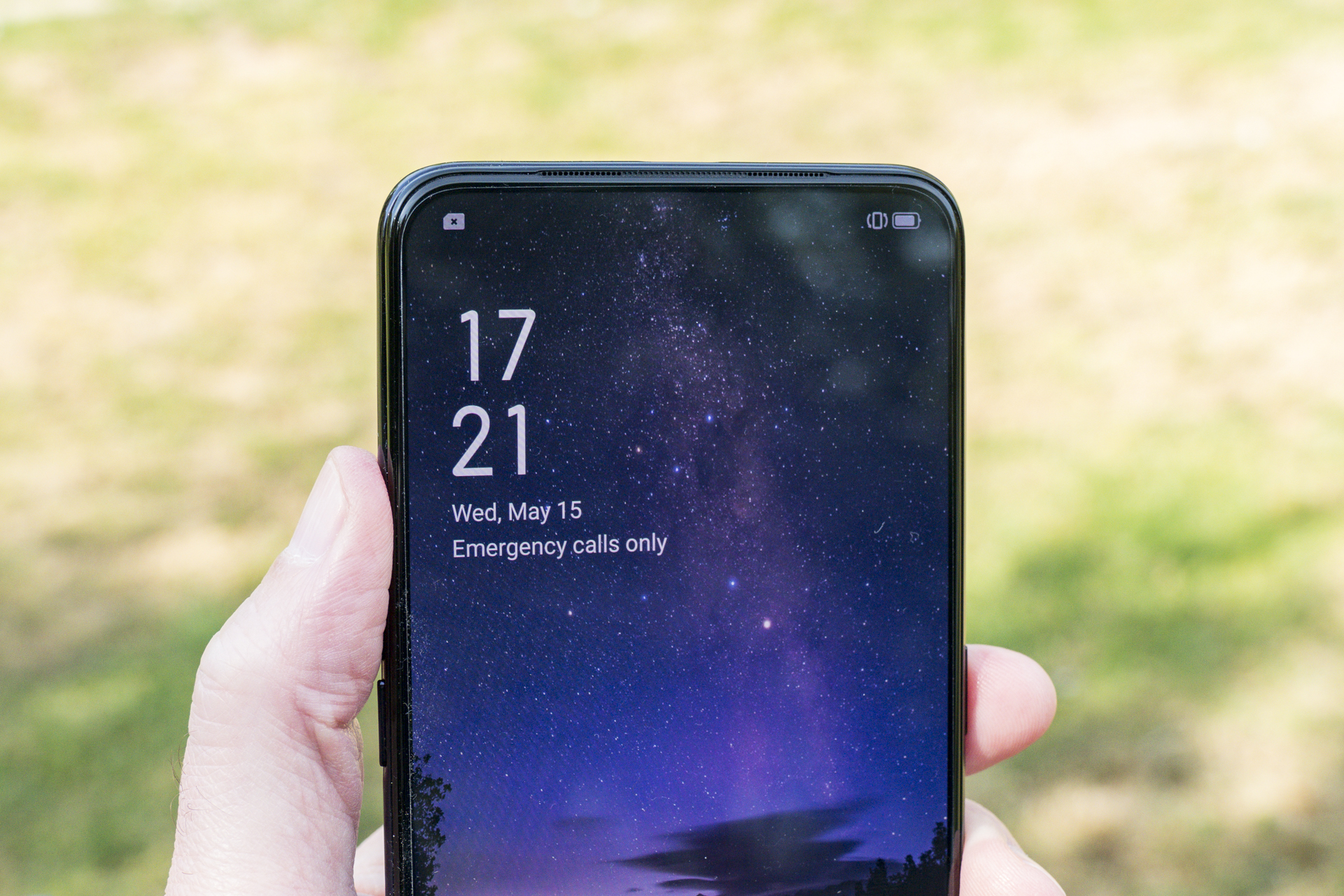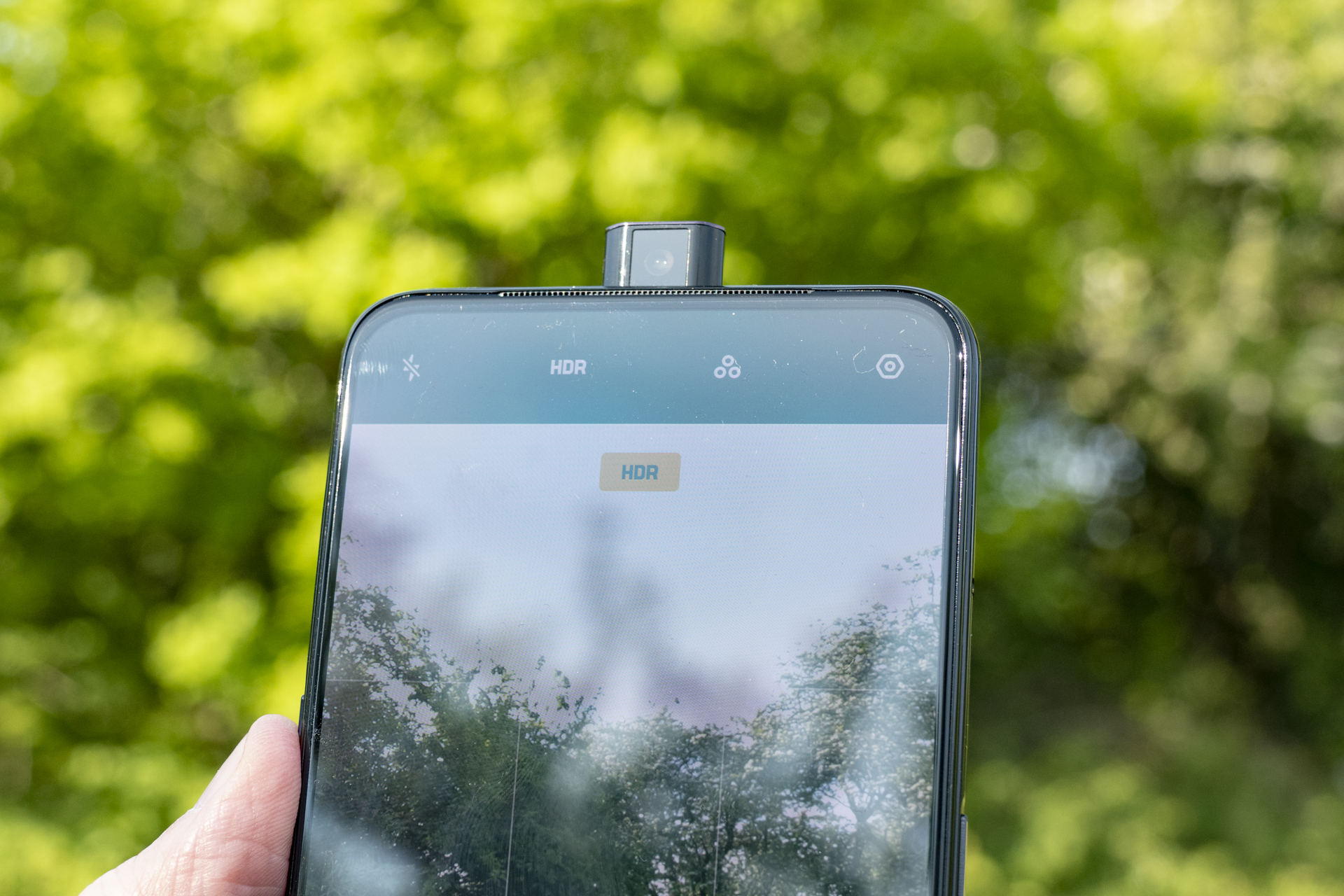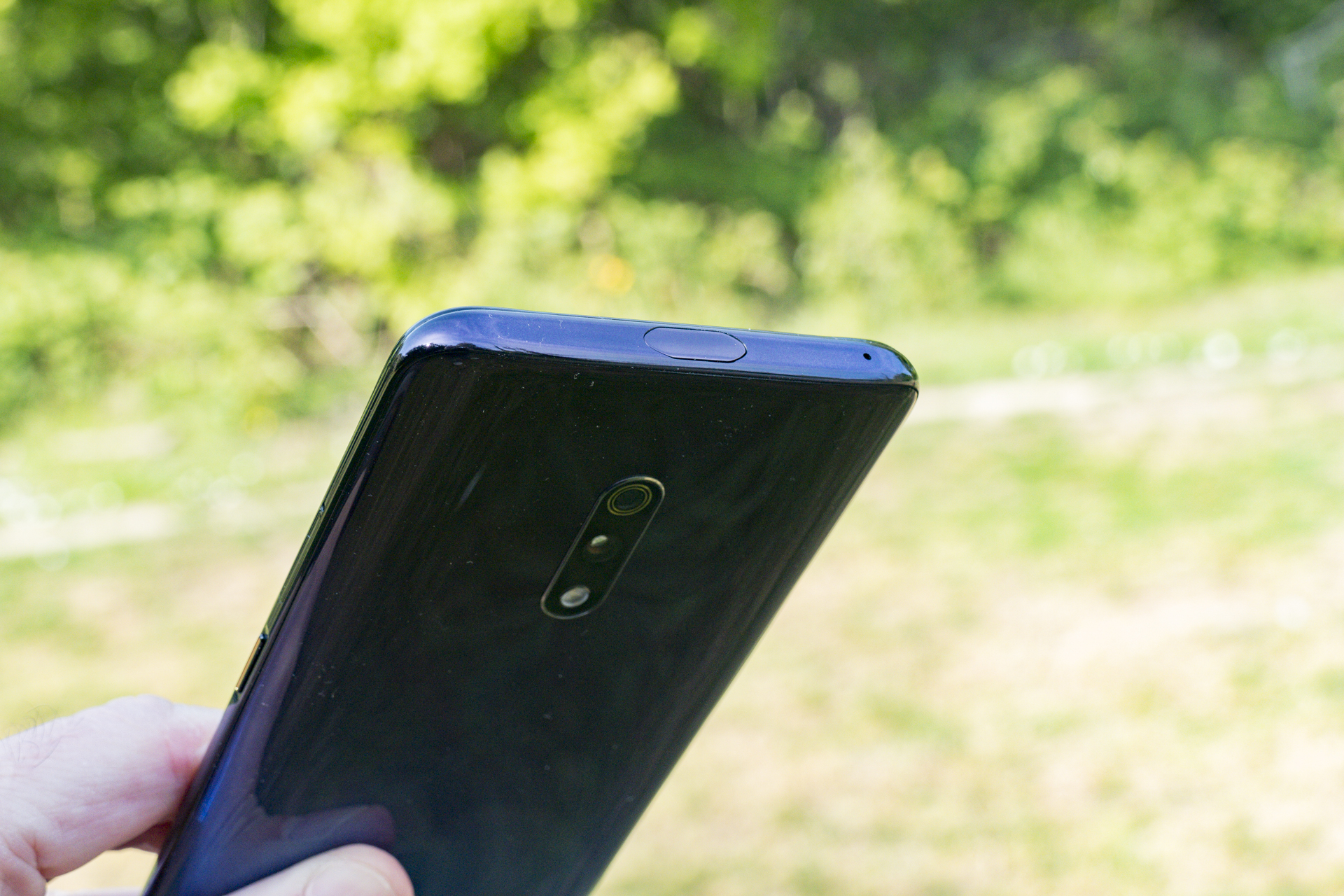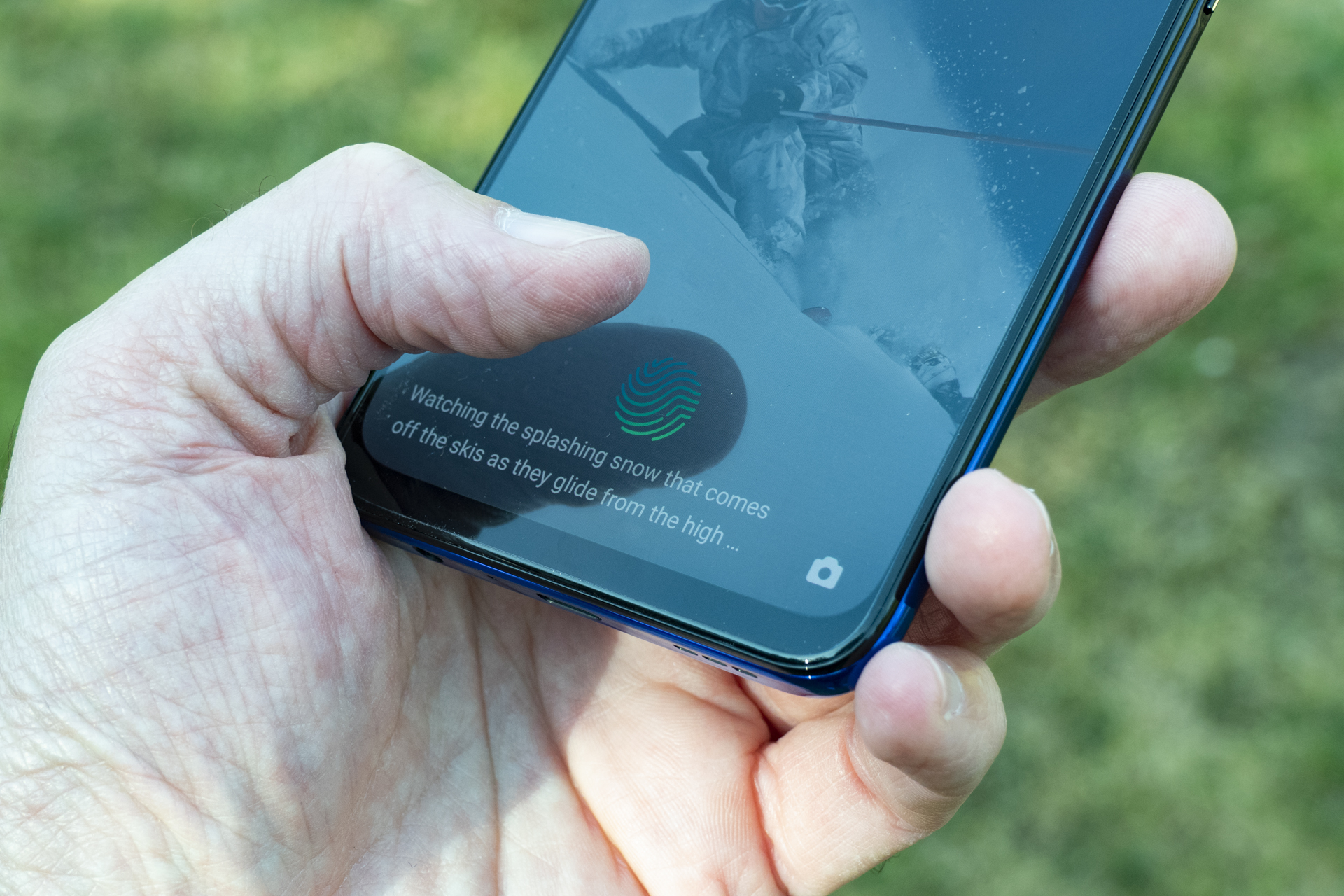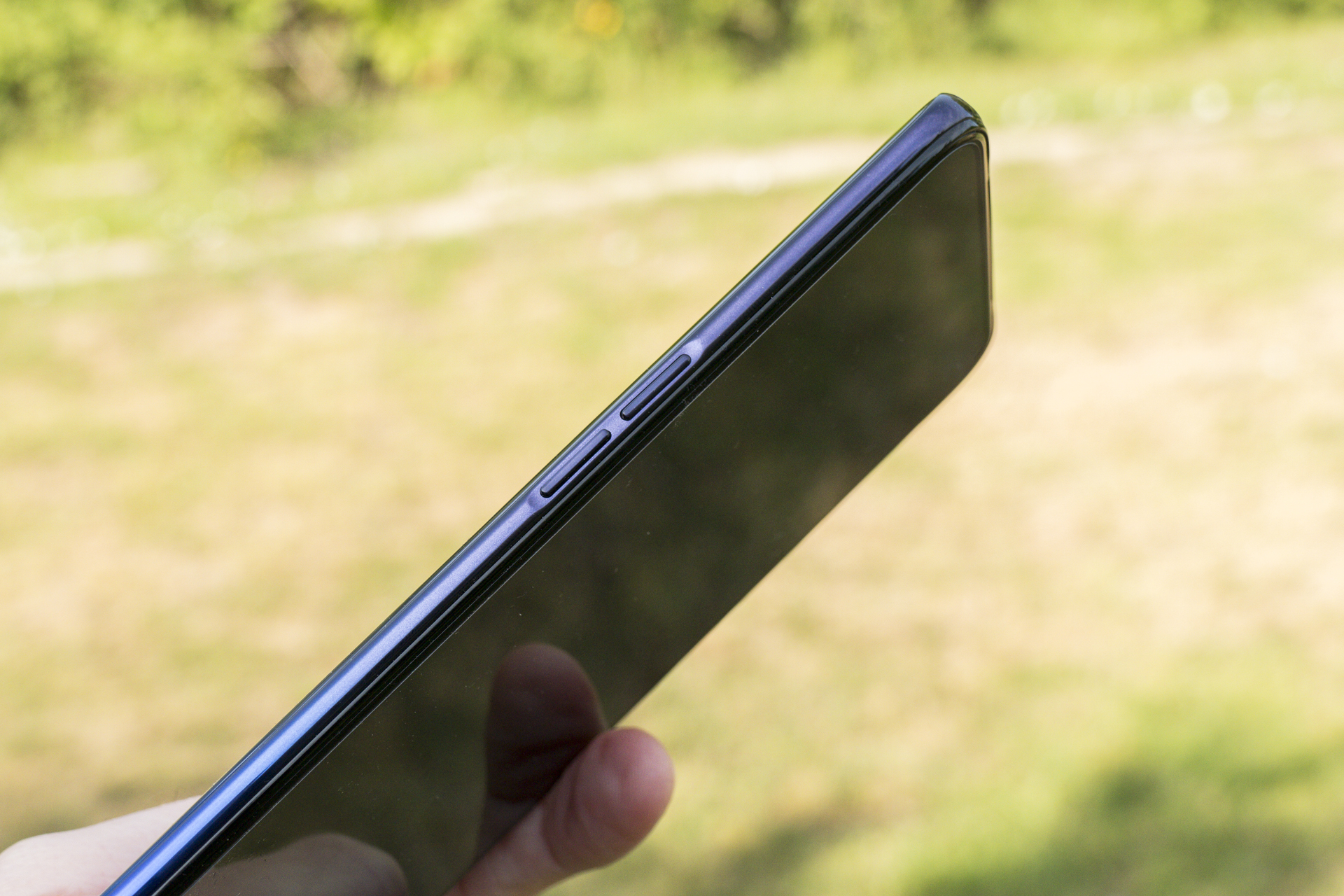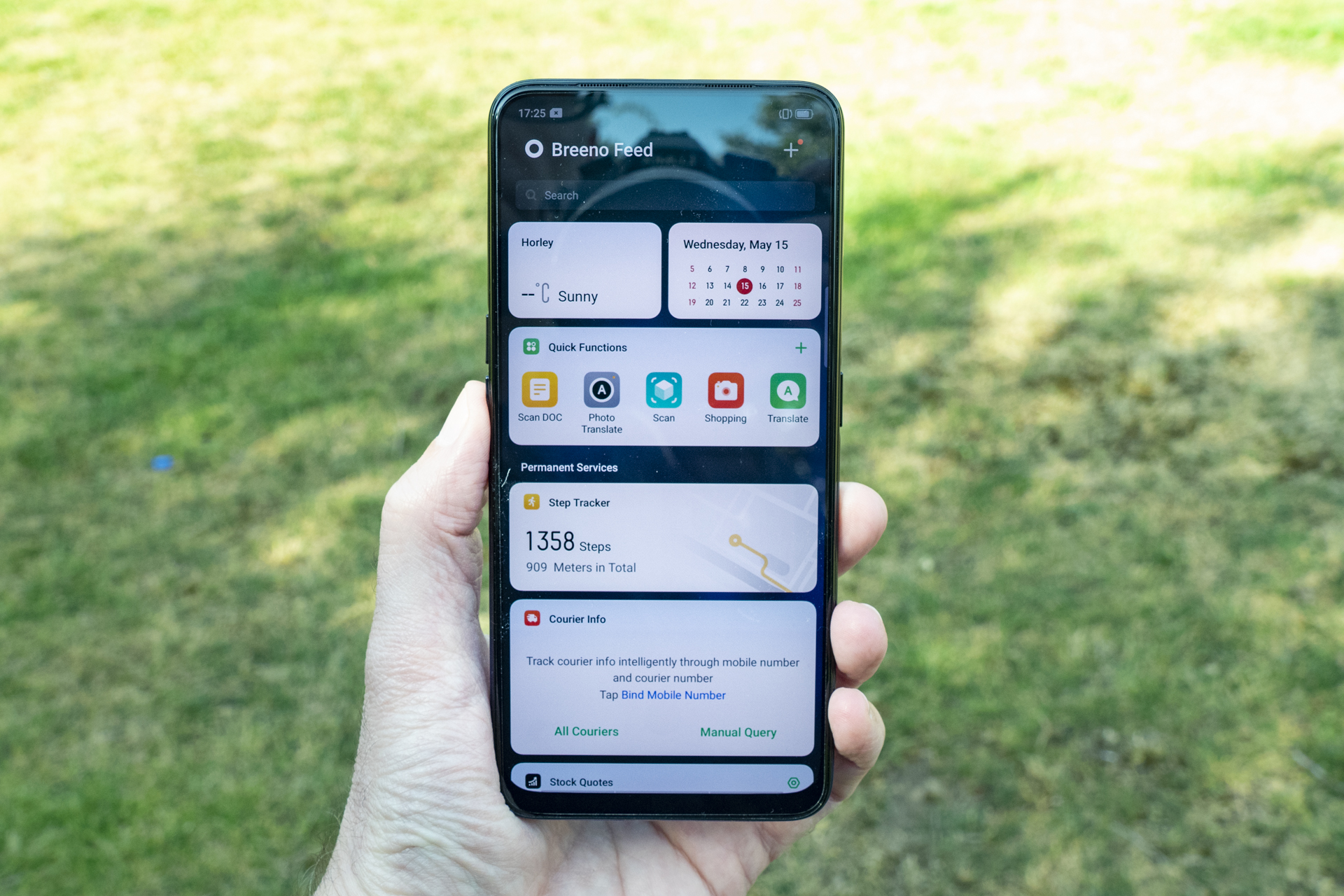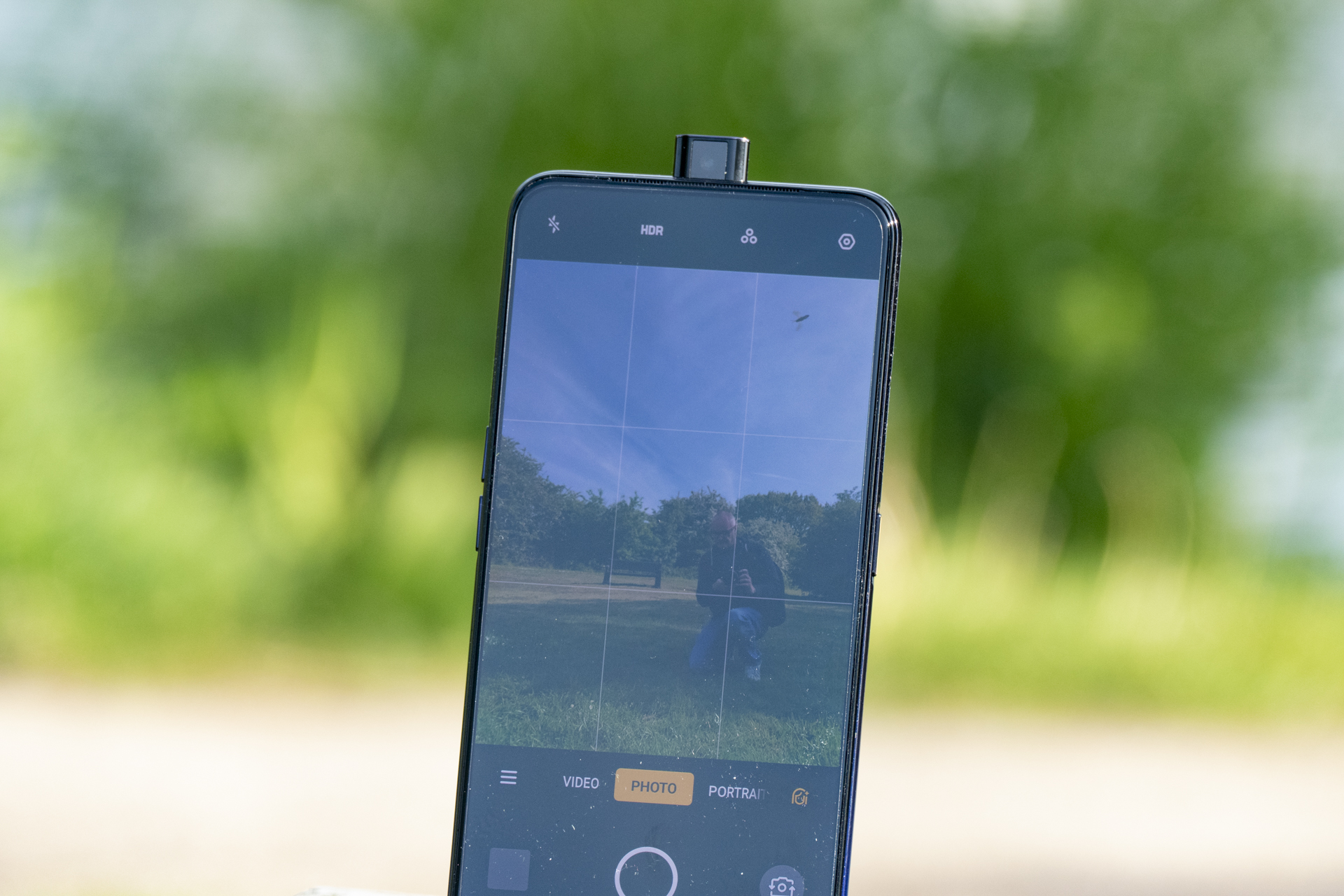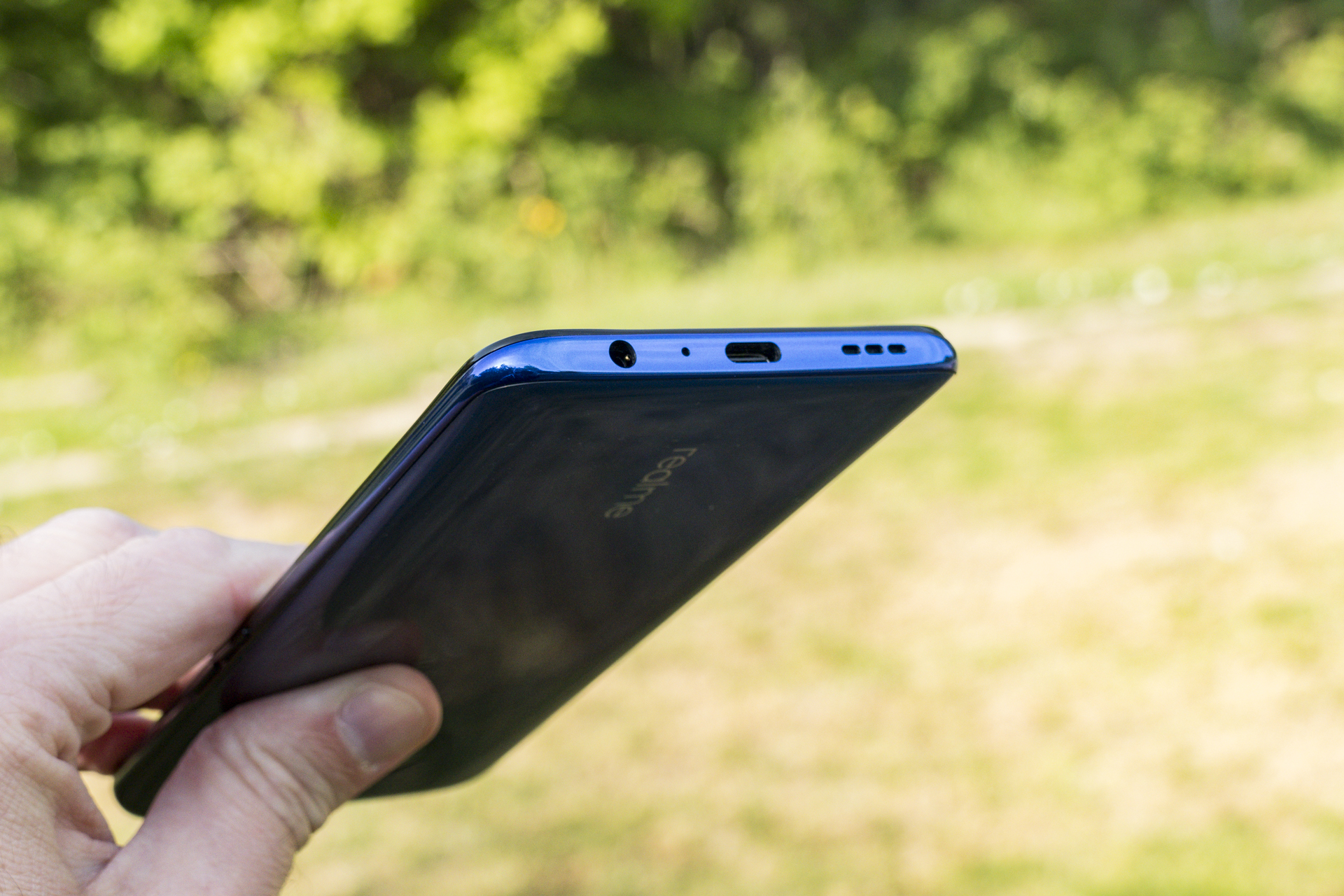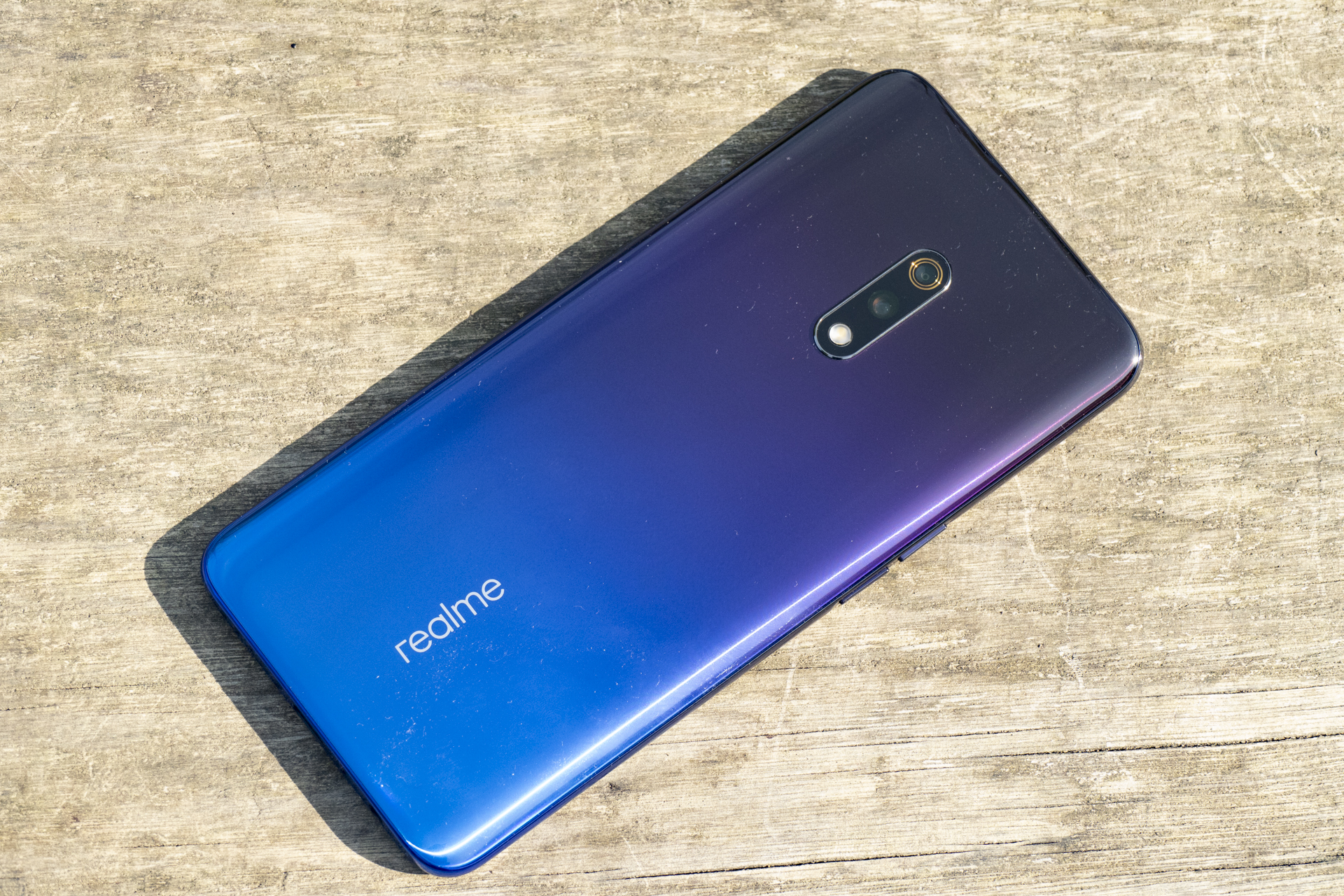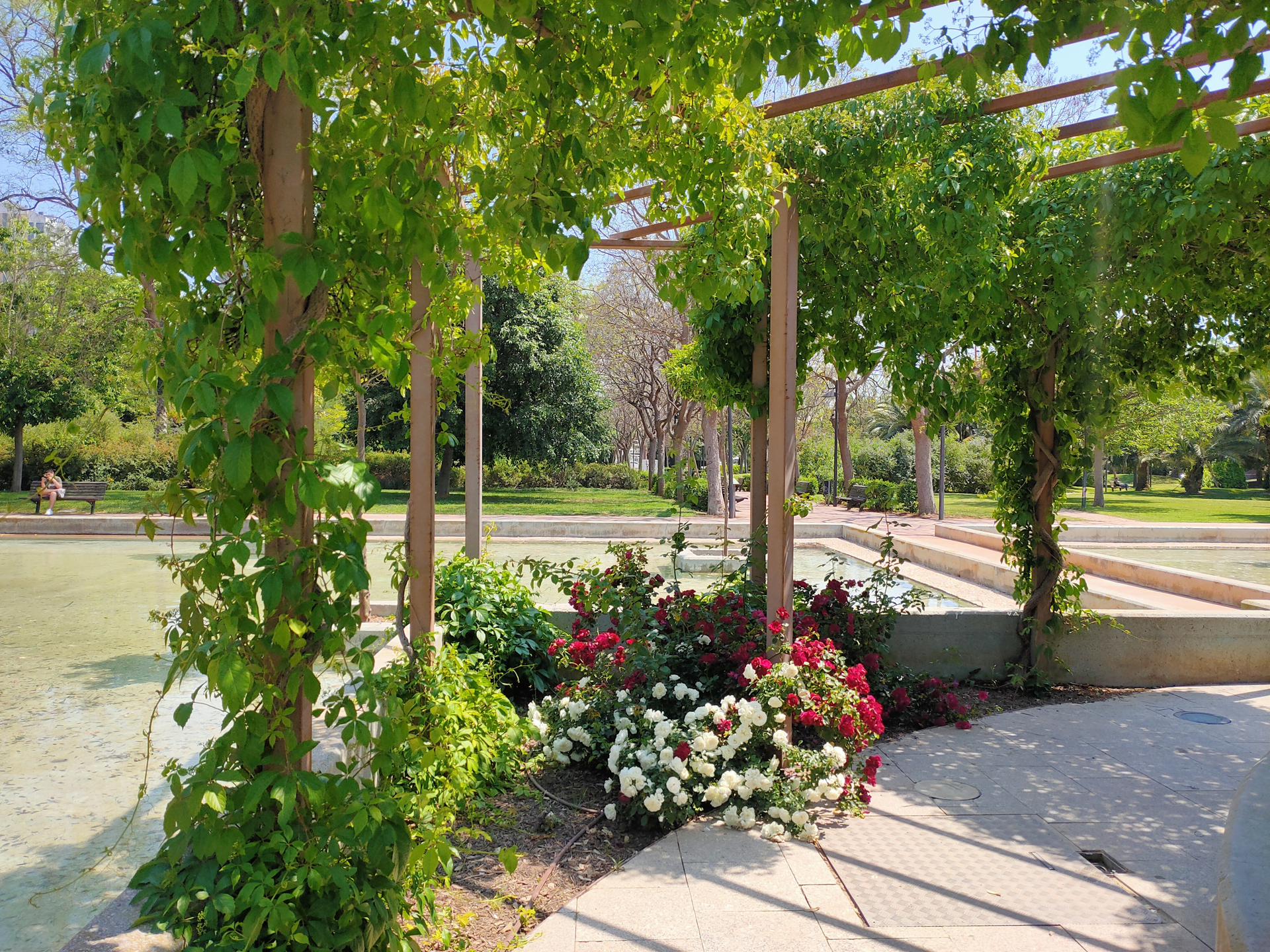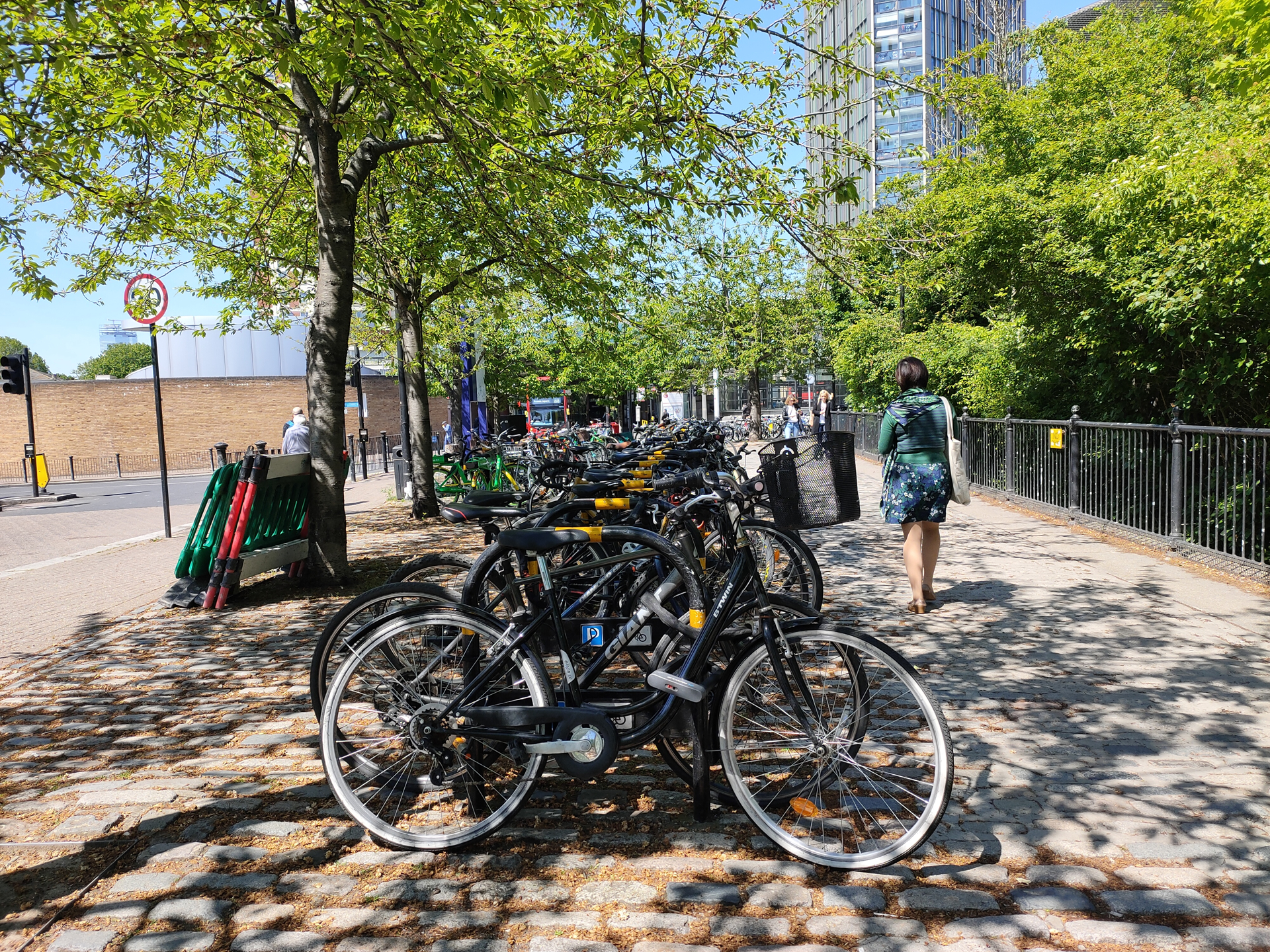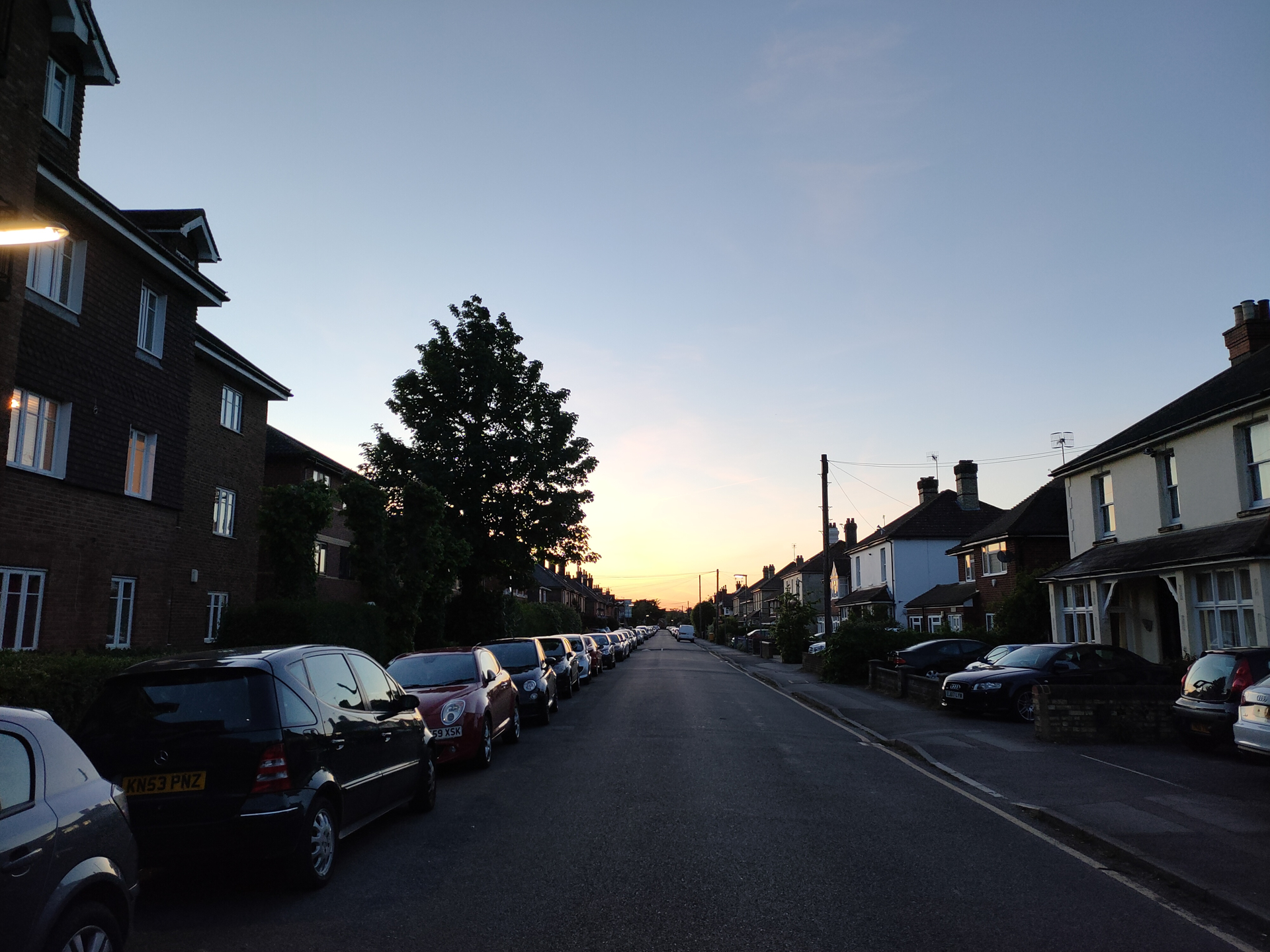There’s cheap, really cheap, and this-doesn’t make-economic-sense cheap. The Realme X falls into the final category. How the one-year-old company produced this phone, for this price, almost defies belief. It has a Snapdragon 710 processor, a notch-less AMOLED screen, a 48-megapixel camera, a pop-up selfie camera, and a striking design. For about $220. And you thought the Google Pixel 3a represented great value for money.
Design
Realme is part of the BBK Electronics empire, along with OnePlus, Oppo, and Vivo. It makes phones for emerging markets but is eyeing releases in Europe, following in the footsteps of its peers. The Realme X, should it be released at this price, will cause quite a stir. The phone I’ve been trying out looks excellent. It has a gradient-style blue and purple color on the plastic back panel, which won’t challenge those from Huawei or Samsung, but adds a visual punch I don’t always expect on such a cheap phone.
The body is lightweight at 191 grams and not overly thick at around 9mm, meaning it happily nestles in your palm and won’t be a problem to slip into a pocket. It’s not sleek like some $1,000 phones, and that’s OK, because it’s a fifth of that price. The sleep/wake key on the right-hand side is gold in color on our version — called punk blue — and easy to locate with the finger, but the volume keys are on the opposite side of the phone, which isn’t very ergonomic for those that are right-handed. On the bottom of the phone is a 3.5mm headphone jack, and a USB Type-C charging port. The latter is great to see, as many low-cost phones from China still come with a MicroUSB port.
Massive camera bumps are usually a minus point, and while the Realme X has a small, slimline camera bump, it’s actually a little too dainty. It houses two lenses and a flash unit, and other than the Realme logo, it’s the only design feature on the back of the phone. It’s because the design is so clean that the camera housing looks rather small. Around the front is a 6.52-inch AMOLED screen with a 2,340 × 1,080 pixel resolution, but without a notch, and bezels small enough for a 91.2% screen-to-body ratio. The bezel at the bottom of the screen is the largest, although hardly intrusive.
Security and software
One thing not taking up space is a fingerprint sensor, as it’s inside the display. It operates as you’d expect on a phone at this price — not always very reliably. Yes, it looks futuristic and again is a complete surprise to see on the Realme X, but I’d rather have a standard sensor on the back that unlocks the phone the first time, every time. The in-display fingerprint sensor does not do this, and usually needs two or three tries to transport me to the home screen.
The photos would be considered good for a phone twice the price of the Realme X.
Once there, it’s Oppo’s Color OS version 6 greeting you. The review model I have is from China, and does not come with Google services, making extensive testing very difficult. But I’ve used Color OS on other Oppo phones, and it’s almost the same here. It’s an improvement over the Realme 2, and less buggy than the Realme 3. The design is very different to Android on the Pixel 3, with a completely different notification shade, no app drawer, and a slide-in information screen called the Breeno Feed. Gesture controls work effectively — swipe up in the center to go to home, swipe up and hold for open apps, and then swipe on the left or right to go back.
Cameras and battery
I have been able to play with the camera, and the results would be considered good for a phone twice the price of the Realme X. The 48-megapixel camera has an f/1.7 aperture, while the secondary lens has 5 megapixels with an f/2.4 aperture. Daytime shots in the sun look excellent, with deep blues and great contrast levels, and viewing them on the AMOLED screen is a pleasure. Use Chroma Boost mode, and colors become almost saturated, and although eye-catching in the right circumstance, it’s not a subtle feature.
Portrait mode blurs the background nicely and recognizes objects as well as faces quickly and accurately. Some of the shots are startling, really pulling the subject to the front of the picture. The camera even has artificial intelligence for scene recognition, a pro mode, and a night mode. Called Nightscape, it shouldn’t be confused with night modes on the Pixel 3 or the Huawei P30 Pro; telling the difference between shots taken with or without the mode active is difficult.
Selfies are taken with a 16-megapixel camera with an f/2.0 aperture, and while it does overexpose in some circumstances, portrait mode is decent with good edge recognition.
The battery has a 3,765mAh capacity, but I have not tested it for any meaningful amount of time, thanks to the China-only software. It’s charged using Oppo’s 20watt VOOC fast charging system, which should zip to around 50% in 30 minutes.
Conclusion
First impressions are very strong. This is a phone that costs $220, yet packs in technology more often seen in high-end phones from some of the industry’s biggest names. Quite a lot can be forgiven in these circumstances, but there doesn’t seem to be that much wrong with the Realme X at all. The software is the biggest downside, and I’d love to see a less highly modified version of
The Realme X has been announced in China, and is set for release on May 20 for the local equivalent of $220, or about 200 British pounds, if you pick the 4GB/64GB version. Go for the 8GB/128GB model and the price rises to about $260. Realme will also release the Realme X in India, and we’re expecting more news on both Europe and potentially the U.S. too. If you want one now it’ll have to be imported with all the associated costs and effort that involves.
Realme continues to be an exciting new
